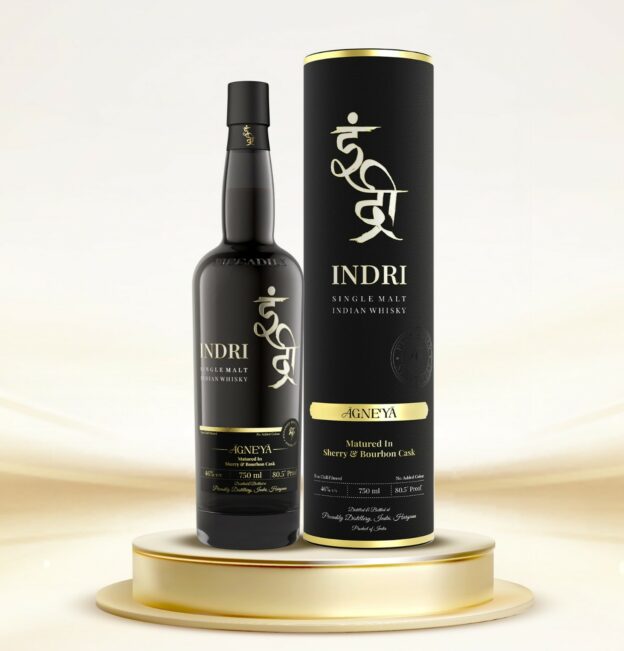- Tilaknagar Industries to become a PAN-India Player in Alcoholic Beverages
- Acquisition is a strategic move to fast-track Tilaknagar Industries’ whisky foray
- Pernod Ricard to accelerate focus on Premiumisation and Innovation
IMFL manufacturer Tilaknagar Industries Limited (TI) has entered into a definitive agreement to acquire Imperial Blue business division (IB) from Pernod Ricard India Private Limited via slump sale, for a lump sum consideration, basis enterprise value of €412.6 million (which translates to approx. ₹4,150 crores as on date). The consideration includes deferred payment of €28 million (₹282 crore as on date), to be paid four years after the date of closure of the transaction.
The proposed transaction includes acquisition of the IB, with 22.4 million 9-litre cases sold in the year ended March 2025 across India and other markets, including two owned units and services from co-manufacturing bottlers across India.
Imperial Blue is the third largest whisky brand in India by volume, with over 25 years of brand heritage. The underlying business had reported revenue of ₹3,067 crore for the year ended March 2025. TI is one of the leading IMFL players with leadership in brandy, the second largest IMFL category. Mansion House Brandy, TI’s flagship brand, is one of the largest selling brands in India and globally.
This landmark acquisition, largest in Indian alcoholic beverages space by an Indian company, fast-tracks TI’s foray into whisky segment, the largest IMFL category in India. It also significantly expands TI’s distribution reach, reinforcing its evolution into a truly pan-India player having strong scale across both brandy and whisky with a combined volume of 34 million 9-litre cases for the year ended March 2025.
Amit Dahanukar, Chairman and Managing Director, Tilaknagar Industries Limited said, “Having achieved leadership in the brandy segment, it is now time for us to broaden our portfolio and cater to India’s diverse and evolving consumer base. While we continue to grow our business organically, this strategic acquisition allows us to enter the whisky category with one of the country’s most trusted and admired brands.”
Imperial Blue will act as TI’s launchpad for a significant whisky premiumisation journey, enabling TI to build a strong whisky portfolio across premium price-points. “We’re excited to build on Imperial Blue’s strong foundation and take it to new heights”, Dahanukar added.
Tilaknagar Industries reported revenue of ₹1,405 crore and EBITDA of ₹226 crore for the year ended March 2025. The transaction is a result of the continuous assessment and evaluation of strategic opportunities, in line with a longstanding policy to deliver sustainable value for the shareholders, employees and partners of TI.
India, second-largest market for Pernod Ricard
Pernod Ricard said that the sale strengthens Pernod Ricard India’s portfolio, enabling the business to fully tap into premiumisation trends and support sustained, profitable growth. As Pernod Ricard’s second-largest market, India is a strategic priority, and this realignment improves the ability to capitalise on the country’s strong macroeconomic fundamentals and long-term potential. Upon closing, the transaction is expected to be immediately and meaningfully accretive to Pernod Ricard India’s operating margin and net sales growth rate.
Pernod Ricard’s active portfolio management is a key contributor to its dynamic growth across categories and geographies. The transaction is the result of the Group’s continuous assessment of its strategic opportunities, in line with its long-standing commitment to deliver sustainable value to its shareholders, employees, clients and partners.
Alexandre Ricard, Chairman and CEO of Pernod Ricard, stated, “We are pleased to announce the sale of the Imperial Blue business division, a strategic move to sharpen our focus on more profitable and faster growing brands in India, like in the rest of the world. This transaction represents a win-win for all stakeholders involved, both at the global and local level. It fuels our ambition to succeed even further in one of our top markets. This will further streamline our operations as we continue to invest in India’s outstanding growth.”
Jean Touboul, CEO of Pernod Ricard India added, “By exiting the Admix Value segment, this disposal will allow Pernod Ricard India to unlock further profitable growth and sharpen its focus on premiumisation and innovation. It will also enable the company to allocate resources more effectively toward high-growth brands such as Royal Stag, which has already surpassed the 30-million cases milestone, Blenders Pride, and international brands like Chivas, Jameson, Absolut, and Ballantine’s.
Driving the next phase of growth, we are entering an exciting new chapter, one that will see bold innovations and an expanded premium portfolio tailored specifically for the evolving Indian consumer.”
The proposed transaction is subject to approval from the Competition Commission of India, with closure anticipated in about six months from signing the definitive agreement. TI will raise a mix of debt and equity to finance the transaction.
Deutsche Bank and Avendus Capital acted as financial advisors, with Avendus Capital also serving as the exclusive financing arranger to TI. Crawford Bayley & Co. and W.S. Kane & Co. acted as legal counsels while Deloitte served as the diligence advisor to TI.





